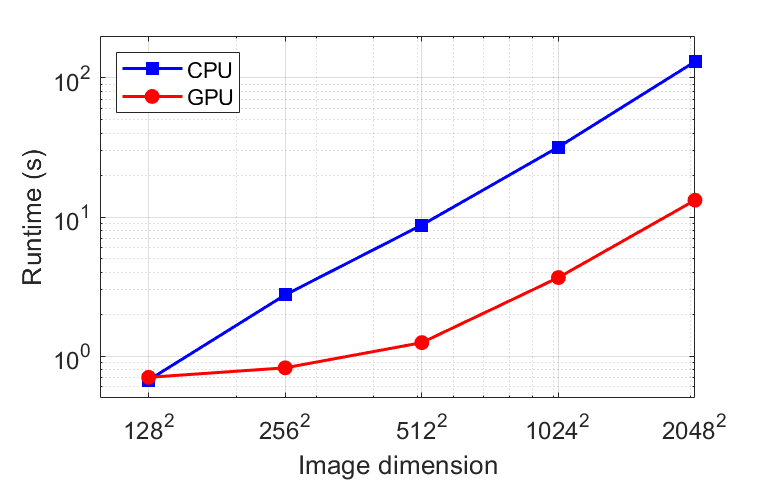Authors: Yunhui Gao (gyh21@mails.tsinghua.edu.cn) and Liangcai Cao (clc@tsinghua.edu.cn)
HoloLab, Tsinghua University
Figure 1. Overview of the proposed method. (a) Schematic of the in-line holographic imaging system. (b) Captured raw hologram of a transparent Fresnel zone plate. Scale bar 1 mm. (c) Retrieved phase distribution. (d) Rendered surface height profile.
Matlab 2019a or newer. Older visions may be sufficient but have not been tested.
- Phase retrieval using simulated data. Run
demo_sim.mwith default parameters. - Phase retrieval using experimental data. First follow the instruction here to download the data. Then run
demo_exp.mwith default parameters. - Try on your own experiment data. Prepare a hologram and an optional reference image, run
preprocessing.mand set the experiment parameters (e.g. pixel size, wavelength, and sample-to-sensor distance). Then rundemo_exp.mand see how it works.
The basic demo codes provide intuitive and proof-of-concept implementations for beginners, but are far from efficient. To facilitate faster reconstruction, we provide an optimized version based on CPU or GPU, which can be found at demo_sim_fast.m and demo_exp_fast.m for simulated and experimental data, respectively. To enable GPU usage, simply set gpu = true; in the code.
Table 1 and Figure 2 show the runtime (200 iterations) for different image dimensions. The results are obtained using a laptop computer with Intel® Core™ i7-12700H (2.30 GHz) CPU and Nvidia GeForce RTX™ 3060 GPU.
| Image dimension | CPU runtime (s) | GPU runtime (s) |
|---|---|---|
| 128 |
0.673 | 0.704 |
| 256 |
2.76 | 0.824 |
| 512 |
8.76 | 1.25 |
| 1024 |
31.8 | 3.67 |
| 2048 |
130.8 | 13.2 |
Table 1. Runtimes (for 200 iterations) using GPU and CPU for different image dimensions.
Figure 2. Runtimes (for 200 iterations) using GPU and CPU for different image dimensions.
For algorithm derivation and implementation details, please refer to our paper:
- Yunhui Gao and Liangcai Cao, "Iterative projection meets sparsity regularization: towards practical single-shot quantitative phase imaging with in-line holography," Light: Advanced Manufacturing 4(1), 37-53 (2023). Publication page | Paper (PDF) | Supplement (PDF)
@article{gao2023iterative,
title={Iterative projection meets sparsity regularization: towards practical single-shot quantitative phase imaging with in-line holography},
author={Gao, Yunhui and Cao, Liangcai},
journal={Light: Advanced Manufacturing},
volume={4},
number={1},
pages={37--53},
year={2023},
publisher={Light: Advanced Manufacturing}
}
